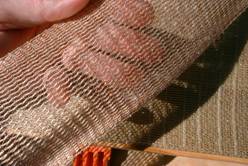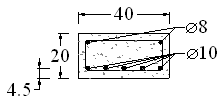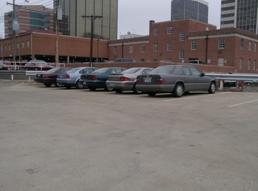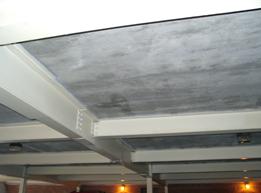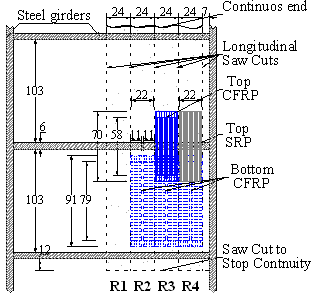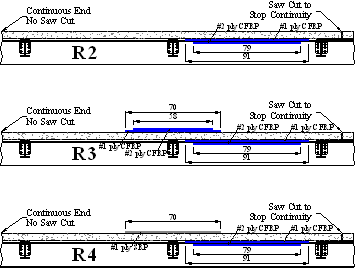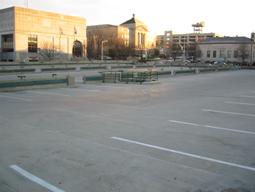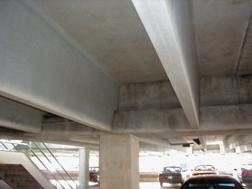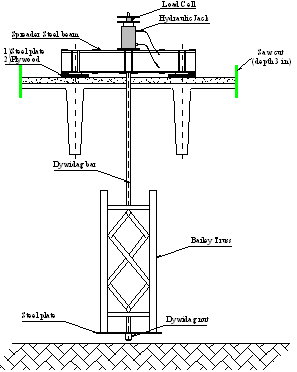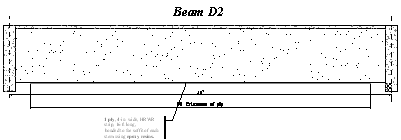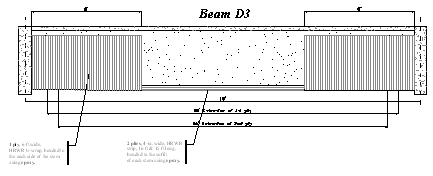Research Activities: 2002
Development and Validation of Steel-Reinforced Polymer (SRP) for Strengthening of Transportation Infrastructures | ||||||||||||||||||||||||||||||||||||||||||||||||||||||||||||||||||||||||||
Status |
| |||||||||||||||||||||||||||||||||||||||||||||||||||||||||||||||||||||||||
Sequential Number | R94 | |||||||||||||||||||||||||||||||||||||||||||||||||||||||||||||||||||||||||
Matching Research Agency | Structural Preservation Systems | |||||||||||||||||||||||||||||||||||||||||||||||||||||||||||||||||||||||||
Principal Investigator |
| |||||||||||||||||||||||||||||||||||||||||||||||||||||||||||||||||||||||||
Student Involvement | Three graduate students: Paolo Casadei, Xi Huang, and Kah Y. Tan | |||||||||||||||||||||||||||||||||||||||||||||||||||||||||||||||||||||||||
Project Objective | To investigate and validate by mean of laboratory and in-situ load testing, the mechanical properties and behavior of steel reinforced polymers (SRP) as external reinforcement for upgrade of concrete structures, intending to maintain and improve on the performance and installation advantages of FRP systems, while significantly reducing their cost.
| |||||||||||||||||||||||||||||||||||||||||||||||||||||||||||||||||||||||||
Project Abstract | In the last decades, fiber reinforced polymer (FRP) composites have been effectively used as external reinforcement for the upgrade of concrete structures. Bonded FRP essentially works as reinforcement to provide additional tensile strength to reinforced and prestressed concrete (RC and PC) members. The proposed innovation intends to maintain and improve on the performance and installation advantages of The use of cord, and specifically steel cord, over other fibers as a primary reinforcement is attractive in several areas. No special resin system is required for use with cord reinforcement, as is required for glass or carbon fibers. Carbon fibers require the use of epoxy resins to achieve the full properties of the fibers. Due to the coarse macrostructure of the cord reinforcement, cementitious grouts can also be used for impregnation. This coarse macrostructure, as compared to the extremely fine diameter of glass or even finer diameter of carbon or aramid fiber, greatly enhances the processability of steel cord reinforced composites. Steel cord reinforced composites should be faster to wet out or can be wet out in extremely thick sections, as compared to traditional fiber composites. The use of a steel based composite material will allow to increase the ductile behavior of the structural element strengthened, while with FRP materials this was not possible due to the completely elastic behavior of these materials with no yielding point. Finally by using cementitious grout to impregnate the steel cord mesh it will be possible to create a composite material that will be fire resistant as compared to the ones realized with epoxy resins and with either carbon or glass fibers that are not. The research project to be undertaken is based around the three following research phases:
Material Characterization The characterization of the new composite material will be conducted by:
Once the new composite is characterized, the workability of impregnation of the mesh and the bonding properties to concrete will be investigated in order to have a complete understanding before laboratory and in-situ application. Laboratory Tests on RC Slabs The objectives of the laboratory experimental program are the following:
In order to achieve these goals, ten reinforced concrete (RC) slabs 12 feet long and internally reinforced with conventional steel grade 60 will be tested in four point bending test as reported in the figures below:
The following specimens will be tested under the test set-up previously shown:
The test matrix is summarized in the following table:
In-Situ Field Tests SRP composite materials will also be tested in two different field tests on concrete structures that are scheduled for demolition. In the first case, the structure is a one-way reinforced concrete (RC) deck supported by steel columns located in St.Louis, Missouri. A total of four continuous beams specimens will be available to be tested within the deck of the garage, by saw-cutting the deck (full depth) along carefully defined lines.
The test matrix and test set-up to be followed in this field testing program will be according to the following drawings:
The following specimens will be tested in the experimental program:
In the second case, the structure is yet a parking garage but built with Double-T prestressed (PC) beams simply supported by concrete reverse T-beams and columns, located in Bloomington, Indiana. A total of three beams specimens will be available to be tested within the garage, by saw-cutting any continuity between two adjacent beams and by testing each beam in a simple supported configuration with a single point load at mid span through each web of the Double-T.
The test matrix and test set-up to be followed in this field testing program will be according to the following drawings:
The following specimens will be tested in the experimental program:
| |||||||||||||||||||||||||||||||||||||||||||||||||||||||||||||||||||||||||
Anticipated Benefits | Development of a new composite material for transportation infrastructure upgrade. | |||||||||||||||||||||||||||||||||||||||||||||||||||||||||||||||||||||||||
Modal Orientation | Characterization of the mechanical properties of a new composite material and assessment of the new composite material as external reinforcement for flexural strengthening in existing concrete structures. | |||||||||||||||||||||||||||||||||||||||||||||||||||||||||||||||||||||||||
Milestones |
| |||||||||||||||||||||||||||||||||||||||||||||||||||||||||||||||||||||||||
Relationship to other Research/Projects | This work uses the same approach found appropriate for FRP materials and already utilized at UMR in several other projects. | |||||||||||||||||||||||||||||||||||||||||||||||||||||||||||||||||||||||||
Technology Transfer Activities | Contractor training for installation of the new composite material. | |||||||||||||||||||||||||||||||||||||||||||||||||||||||||||||||||||||||||
Transportation Research Board Keywords | Composite material, concrete, flexural strengthening, material characterization, repair, steel cord, steel reinforced grout, steel reinforced polymer, testing. | |||||||||||||||||||||||||||||||||||||||||||||||||||||||||||||||||||||||||


